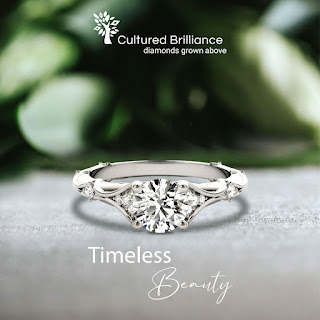5 Reasons To Buy Two-Tone Rings
When purchasing jewelry, it's essential to consider several factors. These include the choice of metals and the desired shape of the precious stone. Additionally, you may need to decide between natural or lab-grown diamond jewelry.
Lab-grown diamond jewelry has been the preferred choice for many people nowadays looking for sustainable sparkles at affordable prices. Eco diamonds are made in laboratories within weeks. Thus, they eliminate the cost of the middlemen involved in the extraction process. Due to their similar characteristics to those of natural diamonds, they are highly valued.
Just like natural diamond jewelry, various options are available when choosing lab-produced diamond jewelry. These days one of the most trending jewelry pieces is the two-tone ring.
Two-tone rings are a beautiful combination of different metals, typically gold and white gold, creating a unique and stunning piece of jewelry perfect for any occasion. While purchasing a two-tone ring, you can either opt for a simple two-toned metal ring or adorn it with a center stone.
Everything has a story behind its existence and so do the two-tone rings. So here is their history to enlighten you about its brilliance.
In ancient times, artisans from Greece and Rome combined gold and silver to create striking jewelry pieces. These rings were often adorned with precious gemstones and intricate designs, making them highly sought after by both men and women. Over time, two-tone rings symbolized wealth and status and were worn by royalty and nobility worldwide.
In the 20th century, two-tone rings became more accessible to the masses, and jewelry designers began experimenting with different metals, such as white gold, rose gold, and platinum. Today, two-tone rings are more popular than ever, with countless designs and styles to choose from.
Having learned about the history of two-tone rings, you might be interested in their benefits.
Versatility
The combination of different metals allows for a range of design possibilities and is paired with various outfits and other jewelry pieces. Two-tone rings form a great alternative to traditional engagement and wedding rings, as they offer a unique and modern twist on the classic diamond ring.Cost-Effective
These lab-grown diamond rings are a cost-effective option than all gold or platinum rings, as the use of different metals can help reduce the cost. This is especially true for those who prefer the look of platinum but don’t want to pay the high price tag.Uniqueness
Two-tone rings are a must-have for any jewelry collection because they offer a unique and striking aesthetic that is impossible with a single metal. The amalgamation of different metals creates a beautiful contrast that draws the eye and adds interest to any outfit.Personalization
These rings also offer a great opportunity for personalization and customization. With so many different metals, designs, and gemstones to choose from, you can create a ring that’s truly one-of-a-kind and perfectly tailored to your style and preferences.Timeless Piece
These rings are timeless and will never go out of style. Unlike other trendy jewelry pieces that come and go, two-tone rings have a classic elegance that will always be in fashion. They’re a great investment piece that you can enjoy in the future.
Thus, two-tone rings are an exquisite and adaptable addition to any jewelry assortment. Boasting a captivating lineage, numerous advantages, and limitless design prospects, it's no surprise that they have gained immense popularity.
Cultured Brilliance is one of the best jewlery stores offering sustainable and ethically sourced lab-created diamond jewlery. You can explore their massive collection of fabulous lab-produced jewels by visiting their website.

Comments
Post a Comment